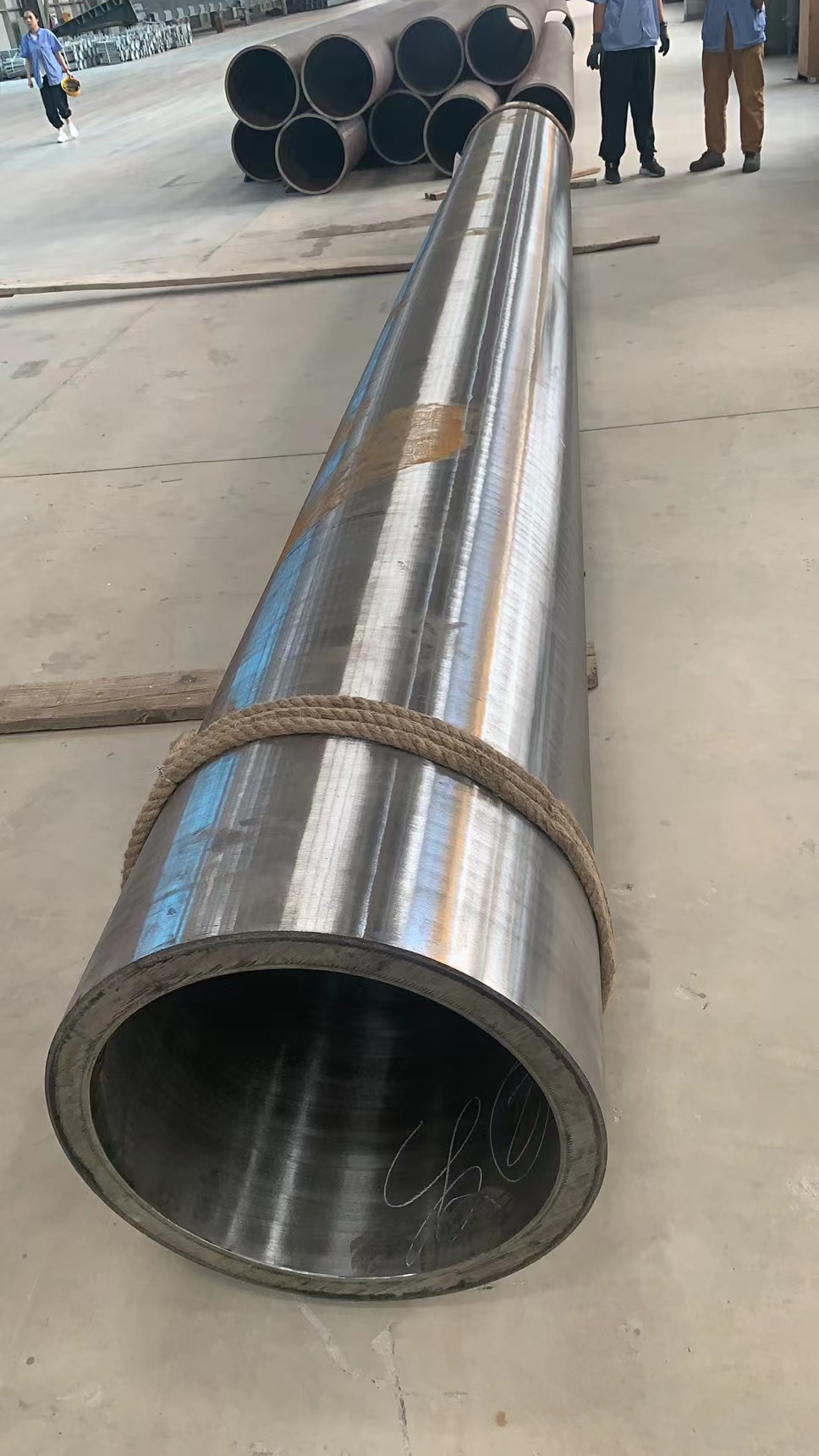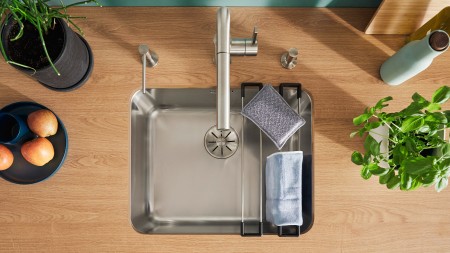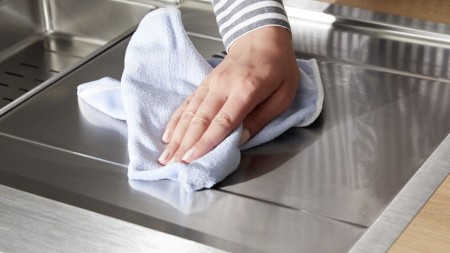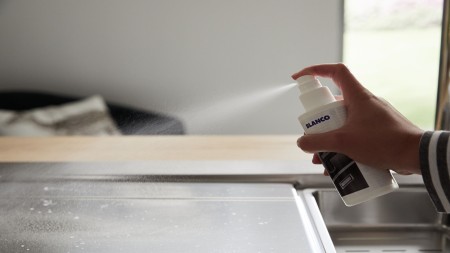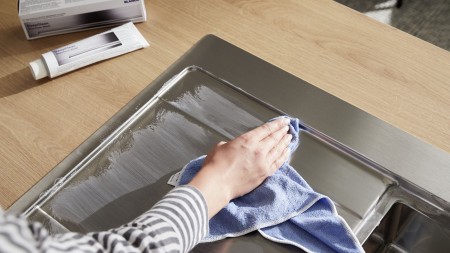EVERY STAINLESS STEEL SURFACE IS DIFFERENT
Stainless steel isn’t all the same! In their original form, stainless steel surfaces with a natural finish are resistant. These surfaces may be treated with both anti-limescale or lemon or vinegar cleaning agents. Linen-look, satin matt and Durinox surfaces may also be cleaned in this way.
Durinox is extremely hard for uncoated stainless steel and is thus twice as resistant as conventional stainless steel surfaces; however, you should not use any polishing agents on it, either. A damp microfibre cloth or a soft sponge without any detergent are fine for daily cleaning. One major advantage is that Durinox stainless steel sinks are also impervious to fingerprints.
Surfaces with a stain polish or brushed finish require a little more care. These materials should be polished along the direction of brushing.
